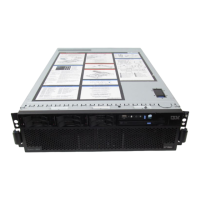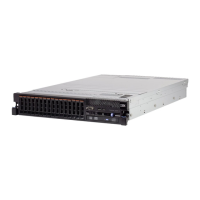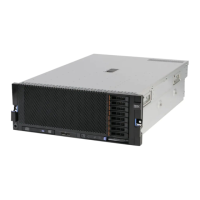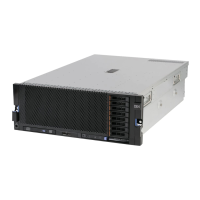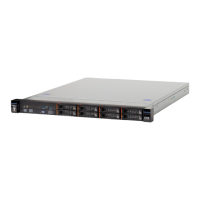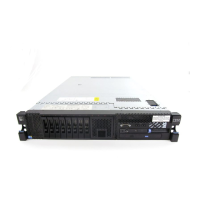Chapter 3. IBM System x3850 X5 and x3950 X5 63
3.2 Target workloads
This solution includes the following target workloads:
Virtualization
The following features address this workload:
– Integrated USB key: All x3850 X5 models support the addition of an internal USB key
that is preloaded with VMware ESXi 4.0 or ESXi 4.1 and that allows clients to set up
and run a virtualized environment simply and quickly.
– MAX5 expansion drawer: The average consolidated workload benefits from increased
memory capacity per socket.
As a general guideline, virtualization is a workload that is memory-intensive and
I/O-intensive. A single-node x3850 X5 with MAX5 has a total of 96 available DIMM
slots. The Intel 7500 series 8-core processors are an ideal choice for a VMware
environment because the software is licensed by socket. The more cores per CPU, the
more performance you get for the same single socket license.
– Virtualization optimized models: One virtualization workload-optimized model of the
x3950 X5 is announced. See 3.3, “Models” on page 64 for more information.
– Processor support: The Intel 7500 series processors support VT FlexMigration Assist
and VMware Enhanced VMotion.
Database
Database workloads require powerful CPUs and disk subsystems that are configured to
deliver high I/O per second (IOPS) from sheer memory capacity (although the importance
of sufficient low-latency, high-throughput memory must not be underestimated). IBM
predefined database models use 8-core CPUs and use the power of eXFlash (high-IOPS
SSDs). For more information about eXFlash, see 3.9.3, “IBM eXFlash and 1.8-inch SSD
support” on page 93.
Compute-intensive
The x3850 X5 supports Windows HPC Server 2008 R2, an operating system designed for
high-end applications that require high-performance computing (HPC) clusters. Features
include a new high-speed NetworkDirect Remote Direct Memory Access (RDMA), highly
efficient and scalable cluster management tools, a service-oriented architecture (SOA) job
scheduler, and cluster interoperability through standards, such as the High Performance
Computing Basic Profile (HPCBP) specification, which is produced by the Open Grid
Forum (OGF).
For the workload-specific model details, see 3 3.3, “Models” on page 64.
VMware ESXi support: If you use a MAX5 unit, you must use VMware ESXi 4.1 or
later. VMware ESXi 4.0 does not have support for MAX5.
For more information, see the following website:
http://www.vmware.com/resources/compatibility/detail.php?device_cat=serve
r&device_id=5317&release_id=144#notes
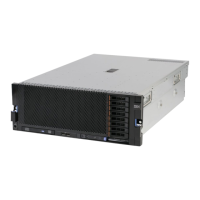
